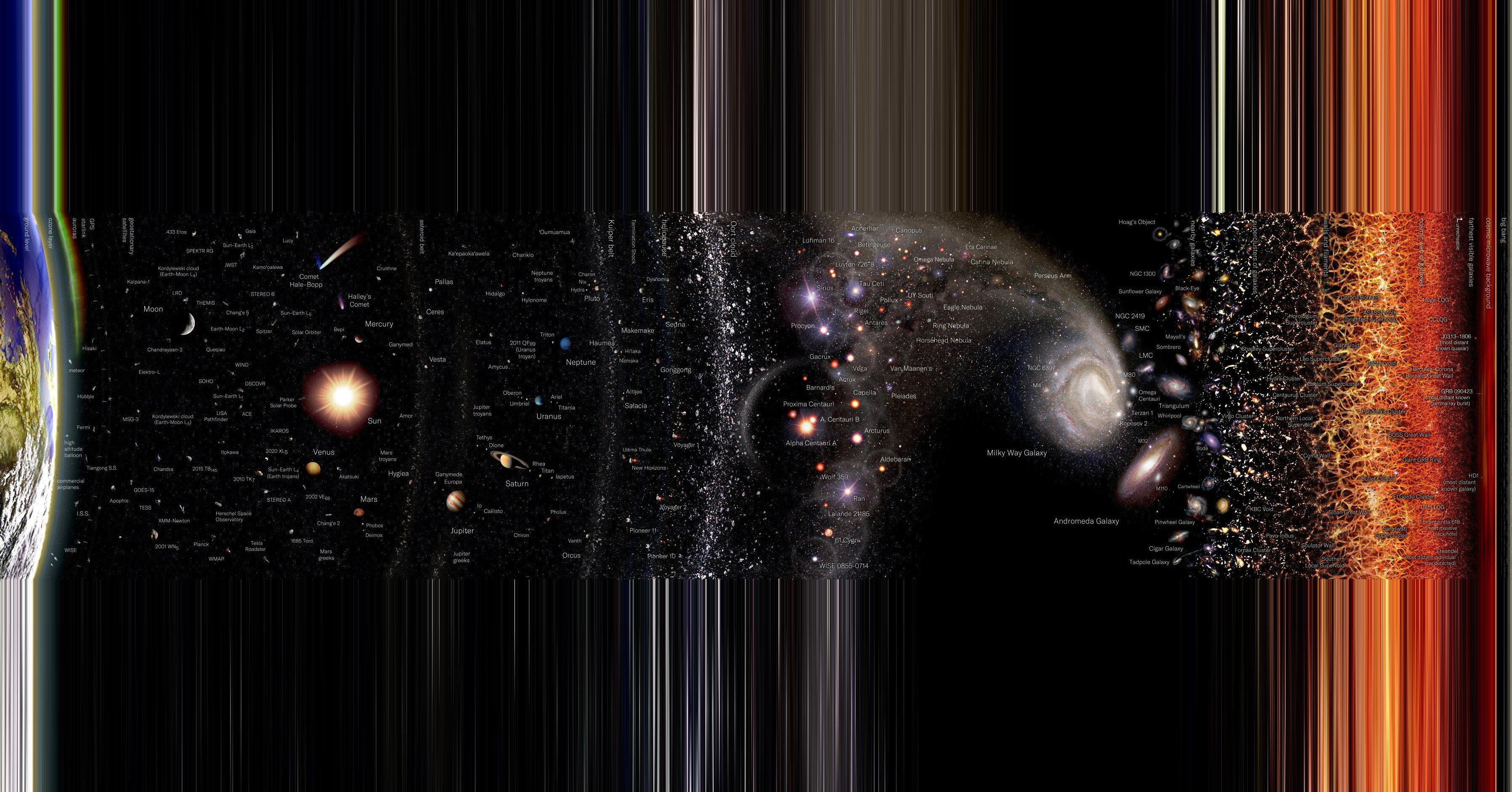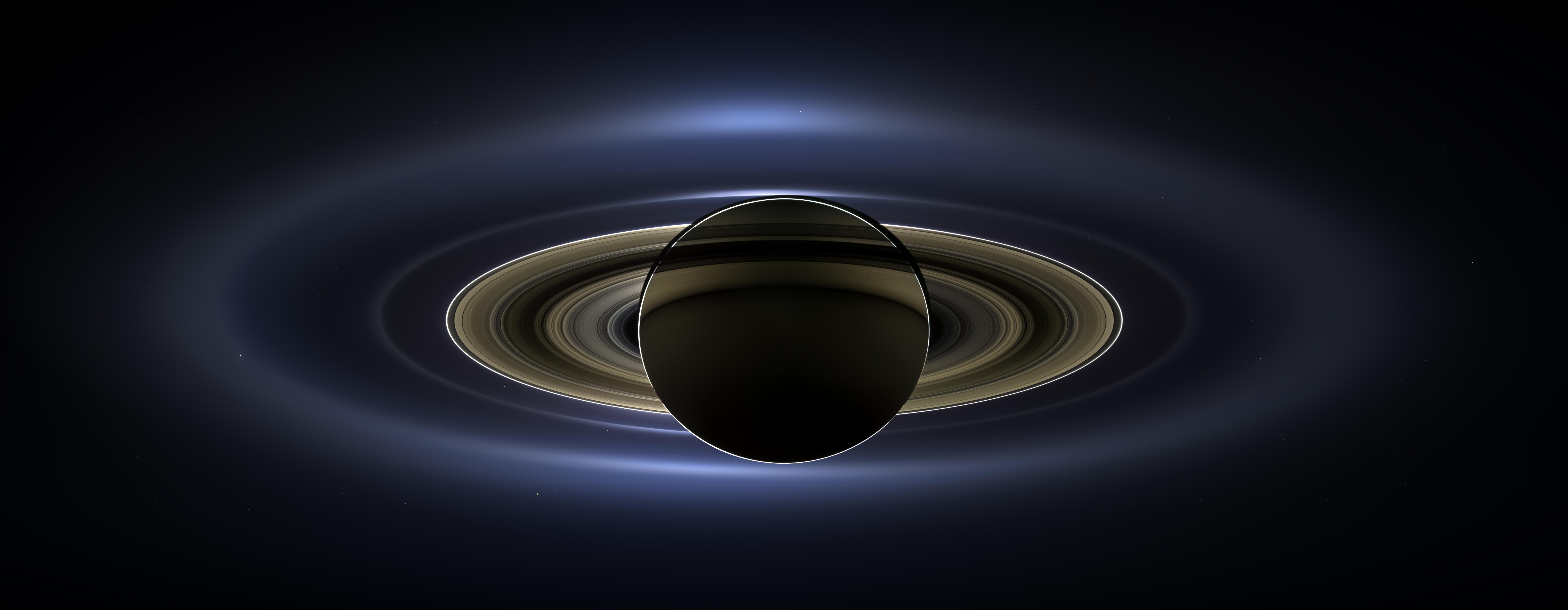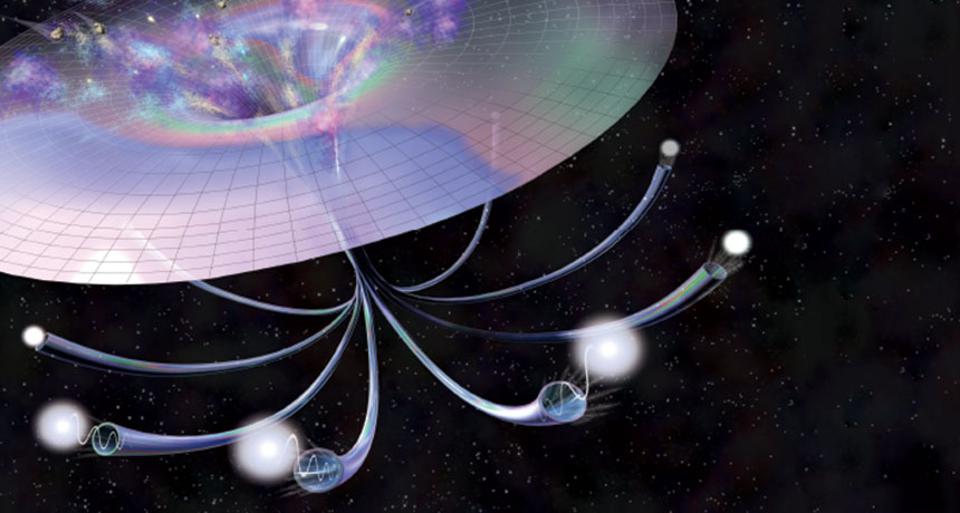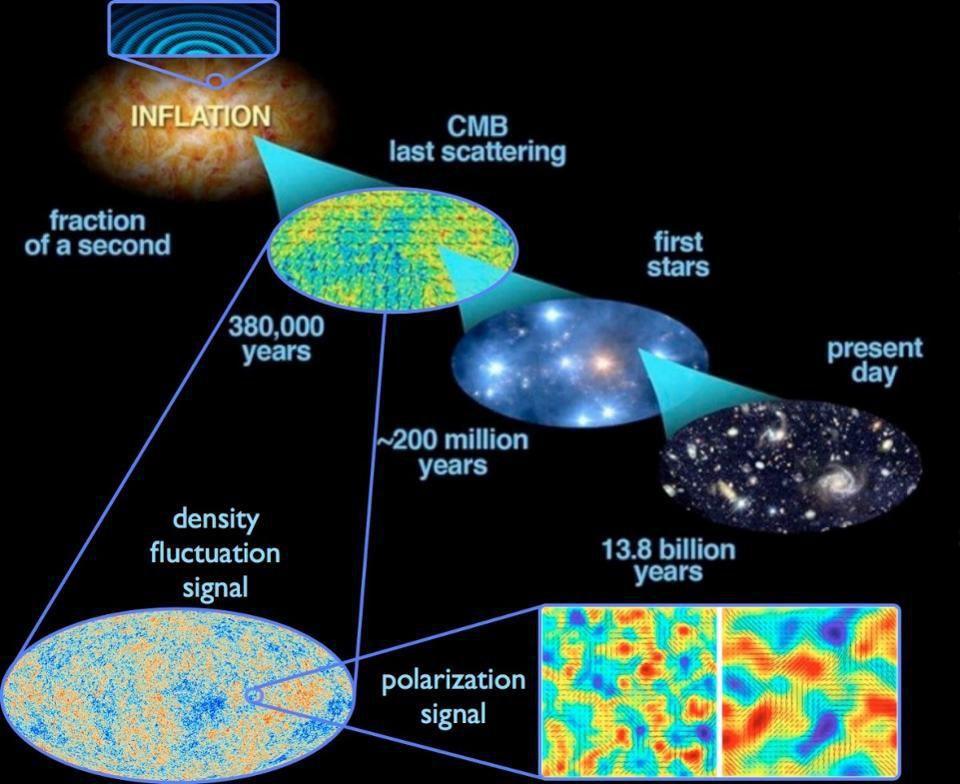Ask Ethan: How do you cope with cosmic anxiety?
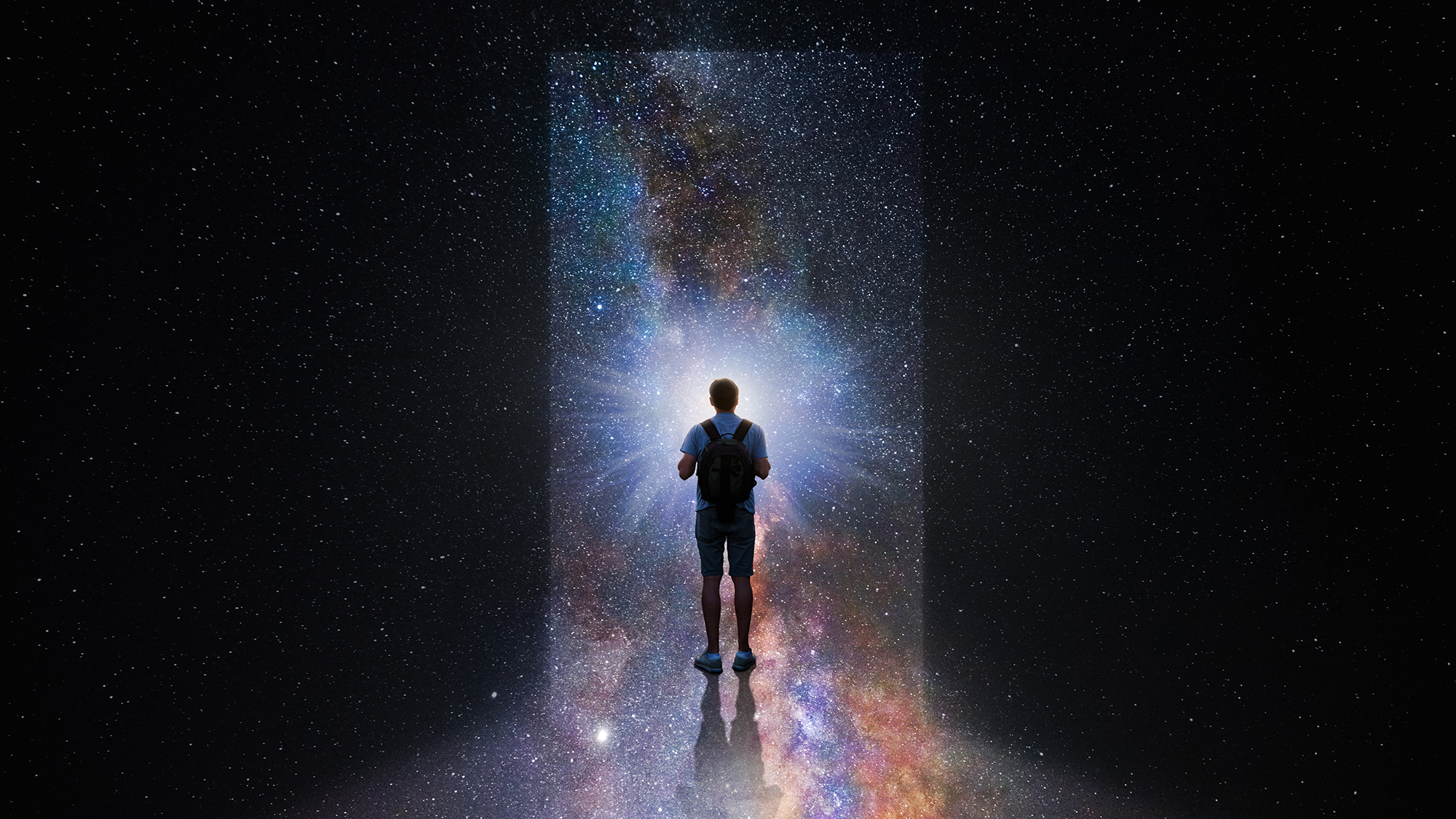
- A lot of people, even some professionals, get a feeling that’s simultaneously a mix of awe and dread when contemplating the sheer vastness of this Universe.
- The observable Universe, alone, spans 92 billion light-years in diameter: quadrillions of times the already impressive Earth-Sun distance, having endured for over 100 million human lifetimes.
- While anxiety is certainly a feeling that so many of us experience when contemplating this vast cosmos, so is a feeling of unparalleled peace. Here’s how one astrophysicist copes.
Our Universe — the cosmos — consists of all that ever was, is, or will be, at least as far as we know. The information that we can access or observe isn’t infinite, but it is tremendously vast. The earliest signals we can receive originated 13.8 billion years ago: at the start of the hot Big Bang or even a tiny fraction-of-a-second earlier, during the final moments of cosmic inflation. We can see objects as distant as 46.1 billion light-years away, and will someday, as light already on its way finally reaches us, be able to see things presently about another 15 billion light-years farther.
But of the trillions upon trillions of galaxies out there, only about 6% of the ones we can see are reachable by us, with the unreachable ones being only observable as they were in the past, not as they are now or will be in the future. With all the vastness of what’s out there, how do people think about it without an overwhelming sense of anxiety and dread? That’s what Jesus Ocotecatl wants to know, writing in to ask:
“How are you, yourself — as a person, this being your life’s work — [how] do you not get scared when making up all [these] theories and [studying] things we won’t ever get to see?”
If you or someone you know experiences these same feelings: of awe and wonder accompanied by fear and even dread, you’re not alone. But there’s good news: most people who study the Universe for a living, myself included, have spent plenty of time thinking about these issues, too, and perhaps some of the lessons we’ve learned can help.

Lesson #1: Allow yourself to experience this fear
What is it that you fear most when you contemplate the Universe? Depending on who you are, you might give a very different set of answers: all of which, of course, are subjective and equally valid.
- Perhaps it’s the incomprehensibility of how minuscule the components that make you up are: that there are some ~1028 atoms inside you, that 7 years ago and 7 years from now over 99.99% of them won’t be the same, and yet, somehow, you remain “you” even as your atoms are replaced.
- Perhaps it’s how small you are compared to the Universe: that we live on one planet around one star out of hundreds of billions in the Milky Way, and the Milky Way is one out of several trillion galaxies present in this vast, expanding Universe, and that nobody knows how big the unobservable Universe truly is, but it could be much, much larger than the part we can access: perhaps even infinite.
- Perhaps it’s temporal: to know that you didn’t exist for the first 13.8 billion years of the Universe, that you get only a few decades before you die, and then the Universe will go on existing for as long as we can fathom until all the stars have died and all the galaxies have disappeared, and we’ll all be gone for all eternity to come.
- Or perhaps it’s about how finite and limited our perspective is: that we only get a brief “snapshot” of the cosmos, to see it as it is at this moment: when the light from various objects is arriving after journeying across the Universe. Almost everything that we can see like this is vastly different by now, and we’ll never be able to know or find out how things turned out.

These are all valid points of view, and each one is capable of triggering that sense of existential dread. Whenever one thinks about how small, finite, and cosmically insignificant our entire lives are — how no matter what we do, the same cosmic fate awaits us all — it’s easy to experience those feelings of being overwhelmed and even hopeless about it all.
When most of us get that feeling, we’re taught, from a young age, to try to suppress, ignore, or just “not think about that sort of thing too much.” And that, in my experience, is precisely how that internal sense of terror gets the upper hand.
Instead, try this: let yourself feel those feelings, and don’t look away. Embrace them, and allow those feelings to wash over you, completely. Yes, the anxiety will grow and grow, and you’ll start to feel overwhelmed. That’s part of the process, however: don’t look away. Keep your mind focused on it, and let it take you as far down the path of fear and despair as you can go. Because what you’ll find, when you allow that to happen, is that there’s a limit. That when you keep asking, “and then what?” to your fear, you run out of new things to fear and wind up stuck on that very last, final one. It’s just you, contemplating the greatest existential fear of all: the ultimate end.
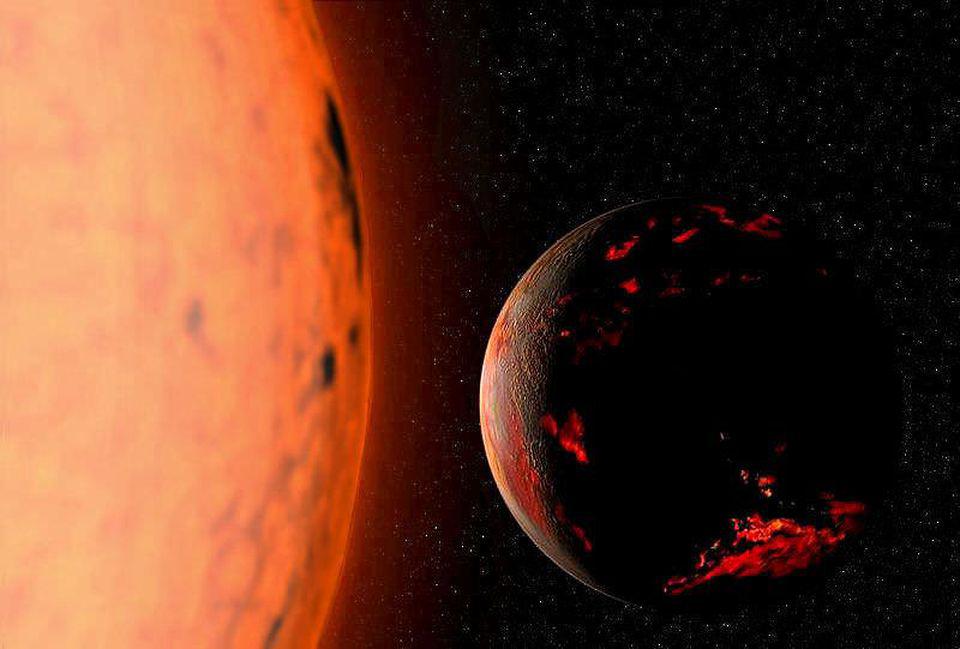
Lesson #2: Develop a knowledge-based counternarrative
The biggest thing we fear, pretty much always, is the unknown. But that’s part of the joy of being a scientist when it comes to these big questions: as we figure things out, the “unknowns” that we once feared become known. As far as I’ve been able to deduce, knowledge, wherever you can obtain it, is the greatest antidote to fear you can get your hands on.
If it’s the fact that you doubt your own realness in some way, because you fear that you’re only an ever-changing collection of atoms, keep in mind that only atoms, with their specific quantum and electromagnetic properties, can build up atop one another to form the complex structures that exist in our reality: molecules, cells, and even entire human beings. In a very fundamental way, knowing that you’re made of such an enormous number of elementary particles, assembled uniquely to your configuration at this instant in space and time, can only help you appreciate the great wonder of existence.
If it’s that the Universe is so large and hard to fathom, that’s the greatest excuse of all to immerse yourself in the great vastness of the cosmos. Everything that you can hold in your head might feel too immense at first, but keep going, because your imagination is the one place where the physical limits of the Universe need not apply.

In our imaginations, we can just as easily picture ourselves doing a pirouette as we can picture:
- planet Earth spinning about its axis,
- the planets within the Solar System orbiting around the Sun,
- the Sun and all the other stars of the Milky Way revolving about the galactic center,
- the Milky Way and Andromeda hurtling through space toward one another, where they’ll collide and eventually merge,
- or the vast collections of galaxies, galaxy groups, and galactic clusters all speeding away from one another as the relentless expansion of the Universe, dominated by dark energy, drives them apart.
In our imaginations, we can pause, slow down, or speed up time, so that the differing timescales over which these events occur is inconsequential. Completing a revolution while doing a pirouette might take less than a second, whereas Earth takes a full 24 hours to spin around once on its axis. The outermost planet, Neptune, takes over 160 years to complete a revolution around the Sun, while the Sun itself takes some ~225-250 million years to make one orbit around the Milky Way. The Milky Way and Andromeda will merge together in 4 billion years, and won’t complete that merger until 7 billion years from now.
Finally, on the largest observable cosmic scales, the various gravitationally bound groups and clusters within the cosmic web will speed apart from one another, eventually disappearing from view entirely, but only after tens of billions of years — several times the current age of the Universe — have passed us by.

Because we can run the clocks inside our heads at whatever speeds we want, we can imagine the earliest times of existence just as easily as the present or the far, distant future. We can understand that after a trillion (1012) years, our Local Group will have merged into one giant galaxy, and that all but the coolest, longest-lived stars — the red dwarfs — will have burned out. We can wait a quadrillion (1015) years, and find that all of the red dwarfs have contracted down to form white dwarfs, and those white dwarfs have cooled and are no longer white in color: they’re brown or even black by this point in time.
Occasional sources of light will still arise, as brown dwarfs merge together to ignite nuclear fusion, or as stellar corpses collide or pass too close to one another, triggering kilonovae, supernovae, or even tidal disruption events. But we can wait even longer and longer periods of time, passing through the epochs where:
- gravitational interactions eject stars and stellar systems from their host galaxies, where they’ll wander the depths of intergalactic space forever,
- stellar and planetary systems emit so many gravitational waves that all of the orbiting masses inspiral, until they merge with the largest, central one,
- and where even black holes, the “vacuum cleaners” of the cosmos at late times, decay away entirely, transforming their mass into energy via Hawking radiation, until they’ve all evaporated away.
Even though the last of these requires thinking of timescales in excess of 10100 years, we can still imagine it just fine.

Lesson #3: Take yourself beyond the limits of both your comfort and your discomfort
This, for me, is how I was able to cope with my own anxiety about the great cosmic story. Once I was able to identify what, specifically, made me anxious and also to learn, up to the limits of our knowledge, what was physically known about those anxiety-inducing topics, to then spend some energy wondering about the big questions that went beyond those limits.
If simply gazing up at the stars and being overwhelmed by the vastness of space and time is what makes you uncomfortable, think bigger and longer-term. Think about how each star that you see has its own “story to tell” when it formed, what sort of system of planets and perhaps other stars (and more) it has, and how it will eventually die. Then think about all the stars that came before in order for this one to exist, and all the ones that will come after, composed of the ashes of this star’s corpse.
Think about the sextillions (~1021) of other stars within the observable Universe, and go beyond to the innumerable stars that must be present beyond the part we can observe. Think even grander, if you can: about what the Universe is like on scales larger than we’ll ever be able to perceive, including the possibility that it loops back on itself, and ponder whether it’s finite or infinite in nature.

There’s something comforting about recognizing that there are even bigger and more profound questions out there than the ones that cause you worry and concern. Our intellectual curiosity need not be limited by what we know, and perhaps the best way to combat our anxiety about the greatest of all cosmic mysteries is to learn as much as we can about them and then to move on to even greater unknowns.
And there will always be greater unknowns to ponder. The more we learn about the Universe, and the more successfully we answer our earlier questions, the more we find new questions out there for us to ponder. We now know, for example:
- what our Universe looks like,
- what our Universe is made of,
- how it came to be the way it is today,
- what its fate in the far future will be,
- and how it originated in a hot Big Bang,
- and that cosmic inflation preceded and set up that hot Big Bang.
Yet new mysteries have emerged, and with them, new, unanswered questions. Are there more fundamental particles than what the Standard Model gives us? What are dark matter and dark energy? Will a new phase transition occur in the future, altering our fate from the expected heat death? And how did the inflationary state that preceded the Big Bang arise, and what does that tell us about an ultimate beginning?
The more time I spend thinking about these questions (as well as many more), the less mental room I find I have for anxiety to creep in.

Lesson #4: Know that this is something we all must reckon with
It also helped to know I wasn’t alone. That ever since the dawn of recorded human history, this type of worrisome anxiety — the feelings of awe and wonder accompanied by dread and terror — is something that almost all of us feel at one time or another. While I was studying Ancient Greek, I came across a word that stuck with me ever since: δεινός, or as I’d transliterate it into the English alphabet: deinos. This word is often translated as something that’s wonderful or awesome, or sometimes as terrible or horrible.
Coming face-to-face with something overwhelming and beyond comprehension often inspires those feelings in us, all at once, despite their seemingly contradictory natures. But it’s not a contradiction; it’s what happens when we face a problem so complex that there’s no satisfactory answer.
We know that there was a time before which nothing that now exists within this Universe was around. There was a time before humans, a time before life on Earth, a time before Earth itself, a time before galaxies and stars and atoms and massive particles and even before the Big Bang. But what exists beyond time and/or space; is there any such thing as “outside” of the Universe or beyond the bounds of either time’s origin or after an infinite amount of time has passed?
And, for all of us, having come into existence a finite amount of time ago and armed with the knowledge that we will someday die, how do we cope, while we’re alive, with the finiteness and limitedness of our own lives?
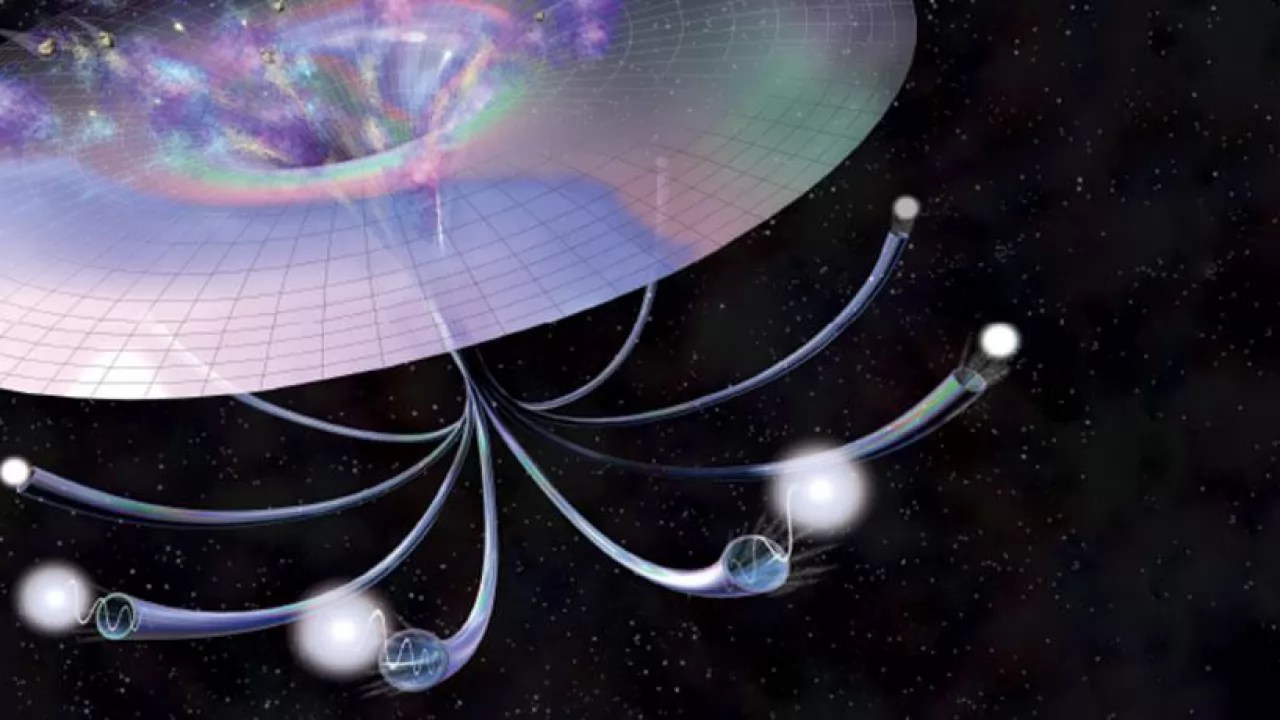
I suppose the best advice I can give is that you must not let whatever fears or anxieties you have prevent you from having a meaningful existence in the most important of ways: however you define “meaningful” for yourself. For even though the Universe may not be affected in any noticeable way by our existence on a cosmic level, either on cosmological length scales or over astronomical timescales, each and every day that we wake we have the opportunity to impact our own lives and the lives of others: for better and for worse.
Despite our obvious differences from one another, the recognition that we all share a nearly identical cosmic story to each other should be a unifying feature of existence. In all the vastness and immensity of this Universe, at least so far, we have only one another to turn to for advice, for comfort, and for intellectually fulfilling companionship. But we can offer more than that as well to each other, including sympathy and compassion, and our shared knowledge and wisdom about not only all that’s out there, but all that’s inside of us, including the limitless depths of our minds and imaginations. For while all of us are alone in the confines of our minds, there are over 8 billion of us that, when you think about it, aren’t so different from one another, after all. If we’re going to be alone, at least we’re alone together.
Send in your Ask Ethan questions to startswithabang at gmail dot com!
